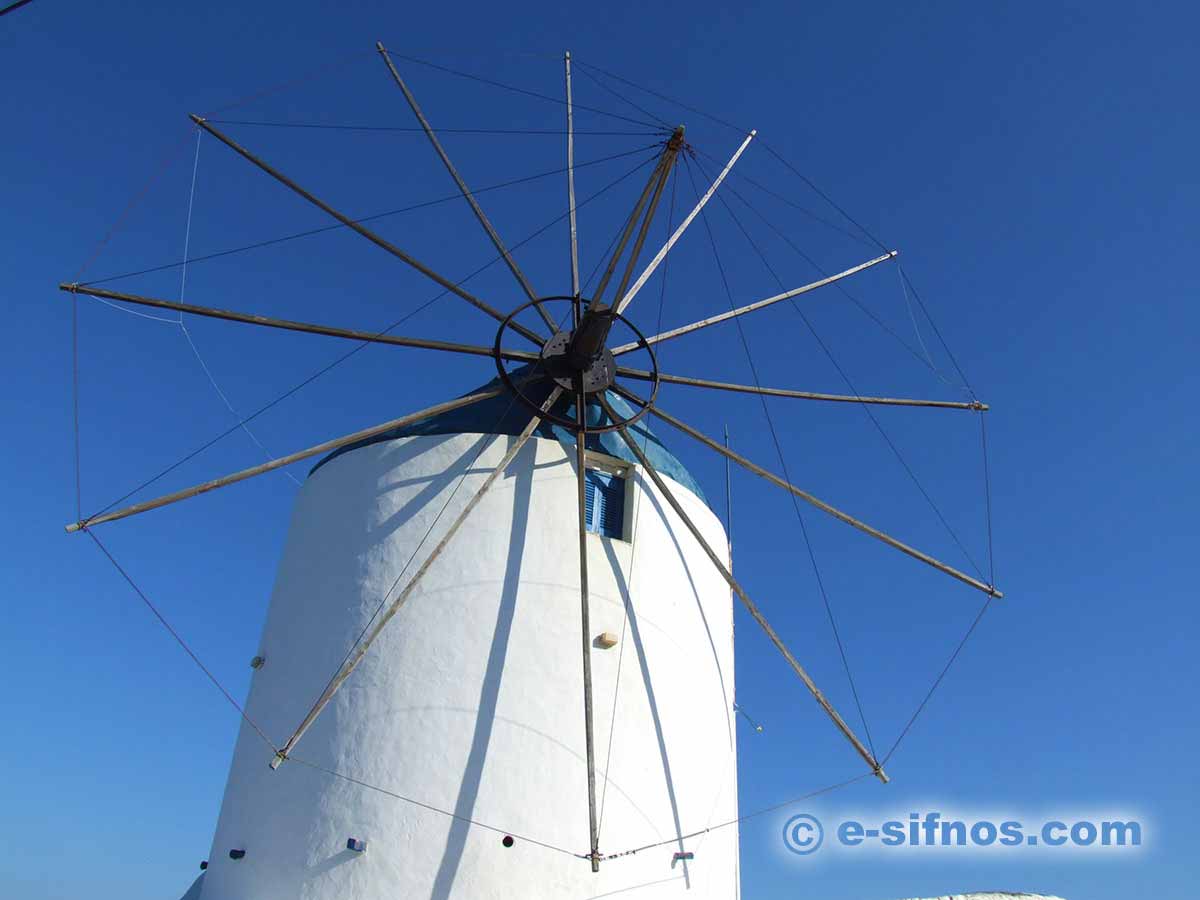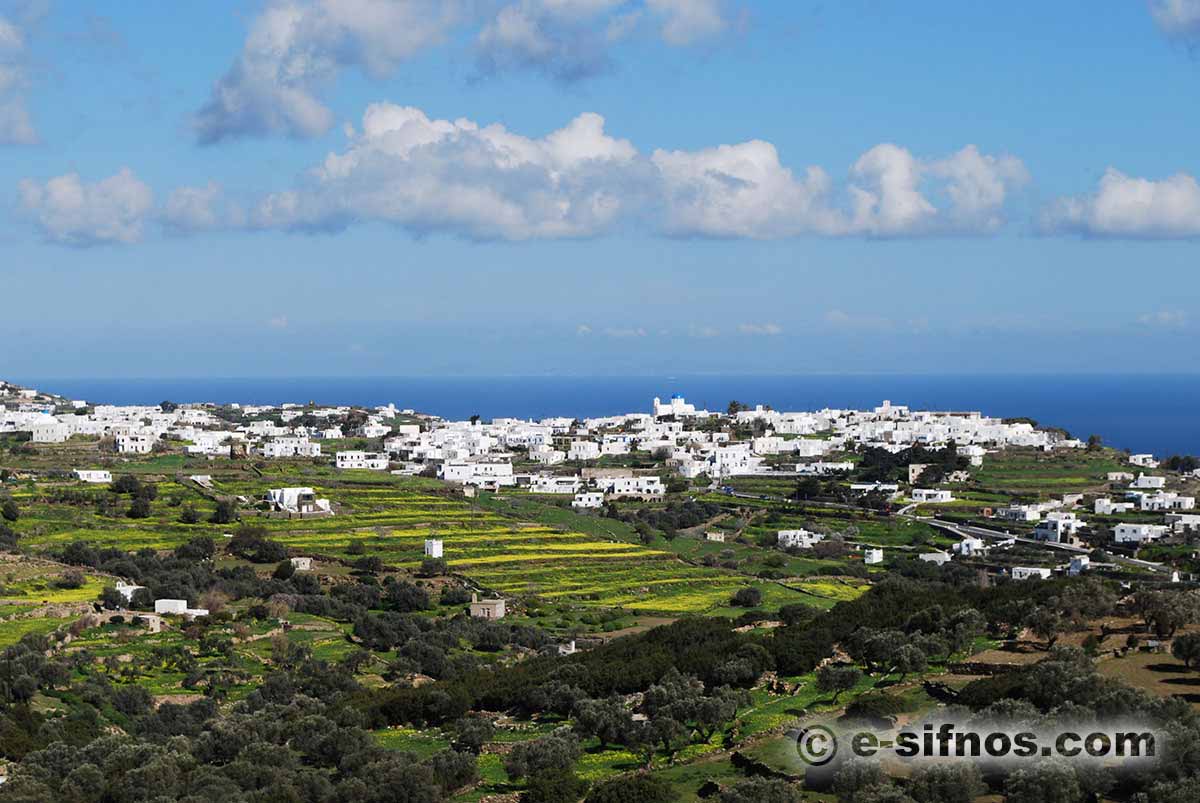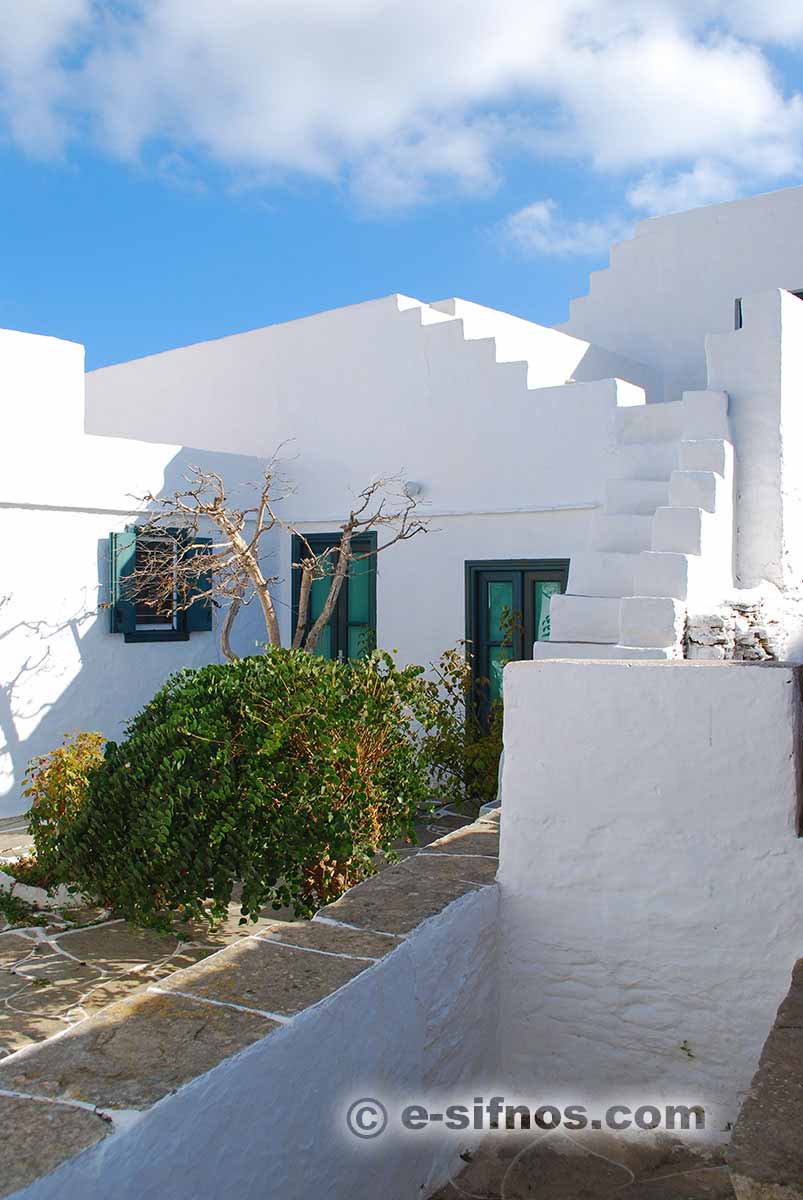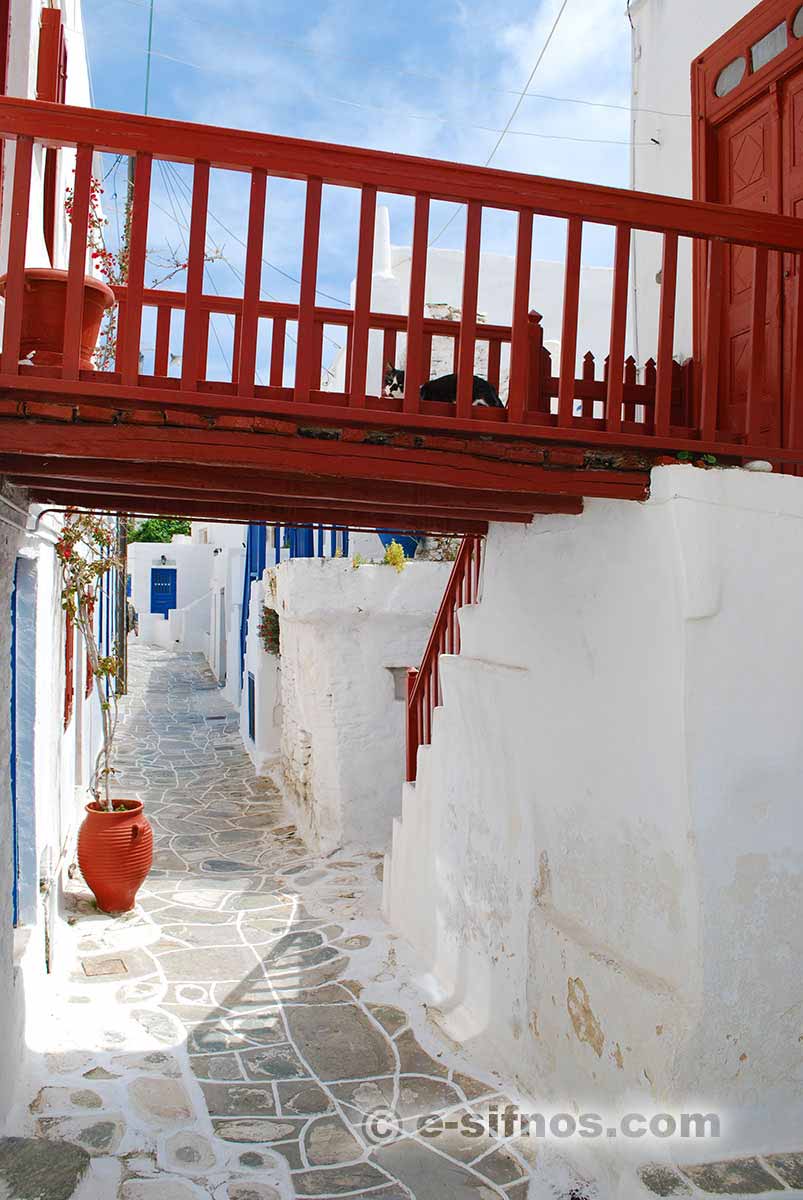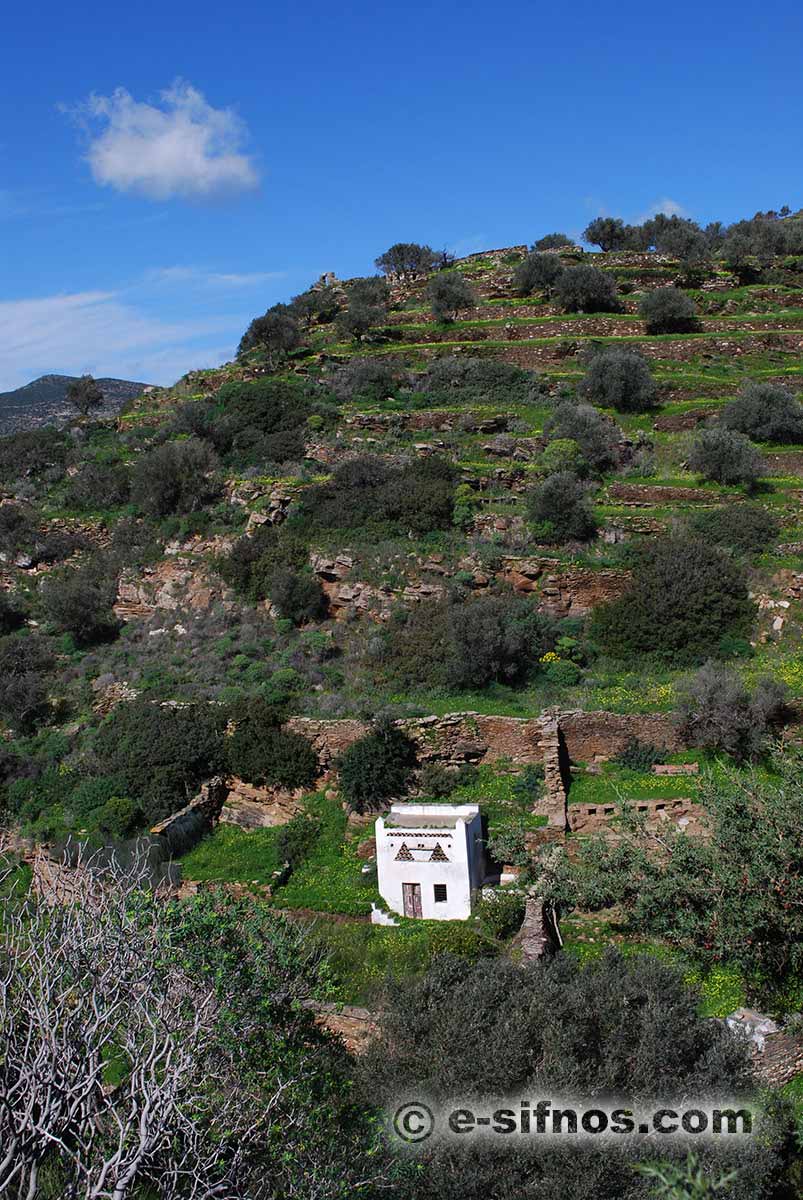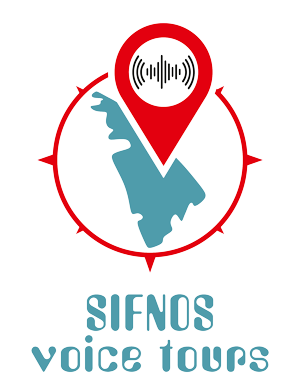The Architecture of Sifnos
Cycladic architecture in Sifnos
A living treasure
Sifnos is one of the finest representatives of Cycladic architecture. Its white, cubic houses are scattered across the island, creating a harmonious landscape interrupted by dry-stone walls that follow the land’s natural contours, dividing the slopes into terraced fields (known as "louria").
Kastro – A living medieval monument
Among all the settlements in Sifnos, Kastro stands out for its unique character. It has preserved its medieval layout almost intact, with narrow alleys, few communal spaces, small courtyards, and archways. The old entrance gates—known as "loggias"—once protected the inhabitants from pirate raids and now serve as iconic elements of the settlement.
Kastro is built in levels, with streets that often pass over rooftops, connecting houses via small bridges. The houses fall into two categories: the narrow, single-fronted homes forming a compact outer "wall," and the more spacious mansions within the settlement. The cobbled streets, wooden doors adorned with family crests, and ancient Roman sarcophagi create an atmosphere that transports visitors back in time.
Traditional settlements – A unified ensemble
Most traditional settlements in Sifnos are located in the island’s central region, giving the impression of an uninterrupted whole. Their houses feature whitewashed alleys, flower-filled courtyards, and small churches with white or blue domes. Walking through these villages is a unique experience, as the network of pedestrian paths seamlessly connects Apollonia, Artemonas, Pano Petali, Kato Petali, Agios Loukas, Exambela, and Kastro.
Artemonas is particularly known for its impressive neoclassical mansions, while seaside settlements have also flourished across the island, such as Faros, Vathi, Kamares, and Cheronissos. These settlements were originally centers of pottery production, hosting workshops near the shore so that ceramics could easily be loaded onto boats and transported across Greece. Today, many of these buildings have been transformed into tavernas, cafés, or guesthouses while retaining their authentic character.
Themonies & pigeon houses – The agricultural architecture of Sifnos
Beyond its traditional settlements, an integral part of Sifnos’ rural life is the "themonies" and pigeon houses. Themonies were small farmhouses used as shelters for farmers and shepherds, typically featuring a stable, storage cellar, wine press, oven, and often a small threshing floor.
Pigeon houses, on the other hand, were small structures with decorative openings used for breeding pigeons—a valuable source of meat and fertilizer for crops.
Gallery
